
LIFETIME DATA ANALYSIS
Scope & Guideline
Advancing the Frontiers of Time-to-Event Analysis
Introduction
Aims and Scopes
- Survival Analysis Techniques:
The journal emphasizes innovative survival analysis methods, including parametric, semi-parametric, and non-parametric approaches, catering to diverse data types and structures. - Causal Inference in Survival Data:
Research often focuses on establishing causal relationships in time-to-event data, exploring methodologies like causal mediation and competing risks. - Complex Data Modeling:
The journal supports the development of models for complex data scenarios, including recurrent events, multivariate outcomes, and data with censoring and truncation. - Bayesian Methods:
A significant portion of the research highlights Bayesian frameworks for survival analysis, allowing for flexibility in modeling and inference. - Applications in Epidemiology and Clinical Trials:
The journal showcases applied research that bridges statistical methods with real-world health issues, particularly in the epidemiological context and clinical study designs.
Trending and Emerging
- Machine Learning in Survival Analysis:
The integration of machine learning techniques, such as neural networks and boosting methods, into survival analysis is gaining traction, allowing for improved predictive accuracy and model performance. - Causal Inference Techniques:
There is an increasing focus on causal inference methodologies, particularly in the context of competing risks and recurrent events, which is essential for understanding treatment effects in real-world scenarios. - Advanced Bayesian Approaches:
The use of advanced Bayesian methodologies, including nonparametric and hierarchical models, is on the rise, highlighting the need for flexibility in handling complex datasets. - Handling Censoring and Missing Data:
Emerging research is addressing innovative techniques for handling censoring and missing data, crucial for improving the validity of survival analyses. - Dynamic Treatment Regimes:
The exploration of dynamic treatment regimes, especially in the context of personalized medicine, reflects a growing interest in tailoring interventions based on individual patient characteristics.
Declining or Waning
- Traditional Parametric Models:
There has been a noticeable decline in the publication of papers focusing solely on traditional parametric survival models, as researchers increasingly favor more flexible and robust approaches. - Basic Descriptive Statistics:
Research centered around basic descriptive statistics in survival analysis is becoming less common, as the field shifts towards more complex and nuanced statistical techniques. - Standard Cox Regression Applications:
While the Cox proportional hazards model remains foundational, its application in isolation is less frequent, with more studies integrating it into broader, more complex modeling frameworks.
Similar Journals
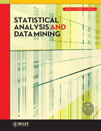
Statistical Analysis and Data Mining
Exploring the Intersection of Statistics and Data MiningStatistical Analysis and Data Mining is a leading journal published by WILEY, dedicated to exploring the latest advancements in statistical methods and data mining techniques. With an ISSN of 1932-1864 and an E-ISSN of 1932-1872, this journal serves as a significant platform for researchers and professionals in statistical analysis, computer science applications, and information systems. Covering a wide range of topics from innovative analytical methodologies to emerging data mining algorithms, the journal aims to disseminate high-quality research that contributes to the evolving landscape of data science. Ranked in the Q2 category for the fields of Analysis, Computer Science Applications, and Information Systems in 2023, it emphasizes its relevance and impact within academia. While it offers limited Open Access options, the insights shared in this publication are integral for those wishing to stay ahead in fast-paced research and data-driven industries. Since its inception in 2008 and continuing through 2024, Statistical Analysis and Data Mining invites submissions that reflect rigorous empirical research coupled with practical implications, making it a vital resource for the academic community.

Statistica
Advancing Statistical Knowledge for a Global AudienceStatistica, an esteemed journal published by the Università degli Studi di Bologna, Dipartimento di Scienze Statistiche Paolo Fortunati, is a vital resource within the fields of statistical science and applied mathematics. Since its inception in 1969, this open-access journal has served as a platform for original research and comprehensive reviews, facilitating the dissemination of knowledge to a global audience. As of 2023, it is indexed in Scopus, holding a noteworthy position in the 43rd percentile in the realm of Decision Sciences and Statistics. Researchers and practitioners benefit from its focus on contemporary statistical methods, data analysis, and probability theory. With a commitment to fostering academic dialogue and collaboration, Statistica aims to highlight innovative findings and applications, ensuring that the community remains at the forefront of statistical advancements.
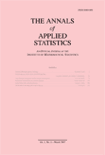
Annals of Applied Statistics
Unveiling Innovations in Statistical ResearchThe Annals of Applied Statistics, published by the Institute of Mathematical Statistics (IMS), is a leading academic journal that serves as a crucial repository for groundbreaking research in the fields of statistics and probability applications. Since its inception in 2008 and continuing through 2024, this journal has established itself as an influential platform with a notable reputation, boasting a prestigious Q1 classification in 2023 across critical categories such as Modeling and Simulation and Statistics, Probability, and Uncertainty. With its rigorous peer-review process and significant Scopus rankings—including a position of #78 in Statistics and Probability—Annals of Applied Statistics aims to foster innovative statistical methods and their applications in a variety of disciplines. Researchers, professionals, and students interested in the latest advancements in analytical methods will find this journal essential for navigating the evolving landscape of applied statistics. The journal does not offer open access options, ensuring that published content reflects the highest academic standards.
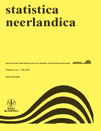
STATISTICA NEERLANDICA
Advancing statistical science through rigorous scholarship.STATISTICA NEERLANDICA is a prestigious peer-reviewed journal published by Wiley, focusing on the fields of statistics and probability. Established in 1946 and addressing key issues in statistical theory and its applications, the journal has significantly contributed to the development of modern statistical practices. With an impressive Q2 categorization in both Statistics and Probability, as well as Statistics, Probability, and Uncertainty, STATISTICA NEERLANDICA stands out within its field, ranking in the 62nd percentile among its peers in mathematics, specifically in statistics and probability. Researchers, professionals, and students can benefit from its rigorous scholarship and innovative methodologies, aiding in the advancement of statistical science. Although the journal does not operate under an open access model, it maintains a commitment to disseminating high-quality research, making it a vital resource for those engaged in statistical inquiry.

Journal of the Indian Society for Probability and Statistics
Unlocking New Perspectives in Probability and StatisticsJournal of the Indian Society for Probability and Statistics, published by SpringerNature in Germany, is a prominent platform dedicated to advancing the field of statistics and probability. With its E-ISSN of 2364-9569, the journal features rigorous research articles, reviews, and theoretical advancements aimed at promoting the application of statistical methodologies in diverse areas. As part of the academic community since 2016, it has maintained a commendable Q3 ranking in the Statistics and Probability category for 2023, indicating its growing influence and relevance. As the journal aims to foster collaborations among statisticians and probabilists, it serves as an invaluable resource for researchers, professionals, and students looking to deepen their understanding and share innovative ideas. While the journal operates under a subscription model, its commitment to open access publication contributes to the broader dissemination of knowledge in this vital field, further enhancing its importance and utility within the scientific landscape.

International Journal of Biostatistics
Exploring Innovations in Biostatistical Applications.The International Journal of Biostatistics, published by Walter de Gruyter GmbH, stands as a critical platform for advancements in the fields of biostatistics and applied statistics in medicine. With an ISSN of 2194-573X and an E-ISSN of 1557-4679, this journal has gained recognition for its rigorous peer-reviewed articles that bridge theoretical statistics and its practical applications in health sciences, maintaining a commendable Q2 quartile ranking in both Medicine and Statistics categories as of 2023. Hosted in Germany, the journal's pivotal role lies in disseminating innovative research findings that guide public health decisions and inform healthcare policy, thus appealing to a diverse readership including researchers, healthcare professionals, and students. Although the journal operates under a subscription model, it remains committed to providing valuable insights into the statistical methods that support evidence-based medicine and improve health outcomes globally. For those engaged in the evolving landscape of biostatistics, the International Journal of Biostatistics serves as an indispensable resource through its comprehensive coverage from 2005 to 2024.
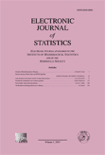
Electronic Journal of Statistics
Pioneering Insights in Statistics and ProbabilityElectronic Journal of Statistics, published by INST MATHEMATICAL STATISTICS-IMS, is a premier open-access platform dedicated to the field of statistics and probability, with a remarkable track record since its inception in 2007. With an ISSN of 1935-7524, this journal has quickly established itself as a leading resource within the top Q1 category in both Statistics and Probability, as well as Statistics, Probability and Uncertainty, highlighting its significance and impact in the academic community. The journal’s commitment to disseminating high-quality research allows researchers, professionals, and students to access valuable findings and methodologies that contribute to the advancement of statistical sciences. With its convergence set to continue until 2024, the Electronic Journal of Statistics remains a vital source for scholars looking to enrich their knowledge and engage with cutting-edge statistical theories and applications.
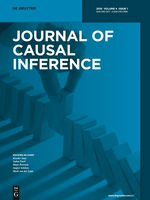
Journal of Causal Inference
Navigating the complexities of causality with expertise.The Journal of Causal Inference, published by DE GRUYTER POLAND SP Z O O, is an esteemed academic journal dedicated to advancing the field of causal analysis within statistics and probability. Since transitioning to an Open Access model in 2020, the journal has encouraged widespread dissemination of research findings and fostered collaborative inquiry among scholars globally. Situated in Germany, the journal serves as a vital resource for researchers and professionals looking to explore innovative methodologies and applications in causal inference. With an impressive Q2 ranking in both the Statistics and Probability and Statistics, Probability and Uncertainty categories for 2023, it provides a prestigious platform for impactful contributions that address contemporary challenges in these domains. The journal, which has a convergence period from 2018 to 2024, actively promotes rigorous peer-reviewed research that pushes the boundaries of understanding in this critical area of study, aiming to provide fruitful insights for academics, practitioners, and students alike.

BIOMETRICS
Driving Innovation in Biochemistry and Applied MathematicsBIOMETRICS, published by WILEY, stands as a prestigious journal that has made substantial contributions across diverse fields, including Agricultural and Biological Sciences, Applied Mathematics, and Biochemistry. With an impressive track record from its inception in 1946 and continuing through to 2024, this journal is recognized for its rigorous peer-reviewed research and high-impact findings, evidenced by its Q1 ranking in various categories such as Medicine and Statistics. Researchers and professionals alike will find a wealth of knowledge within its pages, making it an essential resource for anyone involved in these dynamic and evolving disciplines. While BIOMETRICS does not offer open access, its reputation for delivering high-quality research ensures its continued importance in advancing the scientific ecosystem. For those seeking to stay ahead in their fields, engaging with the latest studies published in this journal is indispensable.
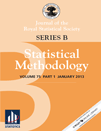
JOURNAL OF THE ROYAL STATISTICAL SOCIETY SERIES B-STATISTICAL METHODOLOGY
Bridging Theory and Practice in StatisticsJOURNAL OF THE ROYAL STATISTICAL SOCIETY SERIES B-STATISTICAL METHODOLOGY, published by OXFORD UNIVERSITY PRESS, is a leading academic journal dedicated to advancing the field of statistical methodology. With a distinguished Q1 ranking in both Statistics and Probability and Statistics, Probability and Uncertainty as of 2023, this journal stands at the forefront of statistical research, serving as a vital resource for researchers, professionals, and students alike. The journal has been committed to fostering innovative statistical techniques and methodologies since its inception in 1997, covering a wide scope of topics that push the boundaries of statistical applications in various disciplines. Based in the United Kingdom, the journal maintains its reputation through rigorous peer-review practices and high-quality content, making it an indispensable platform for those looking to disseminate their findings and engage with current trends in statistical science. Although the journal does not offer open access, the impact and scholarly significance of its articles remain profoundly influential in shaping contemporary statistical discourse.